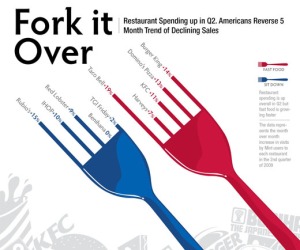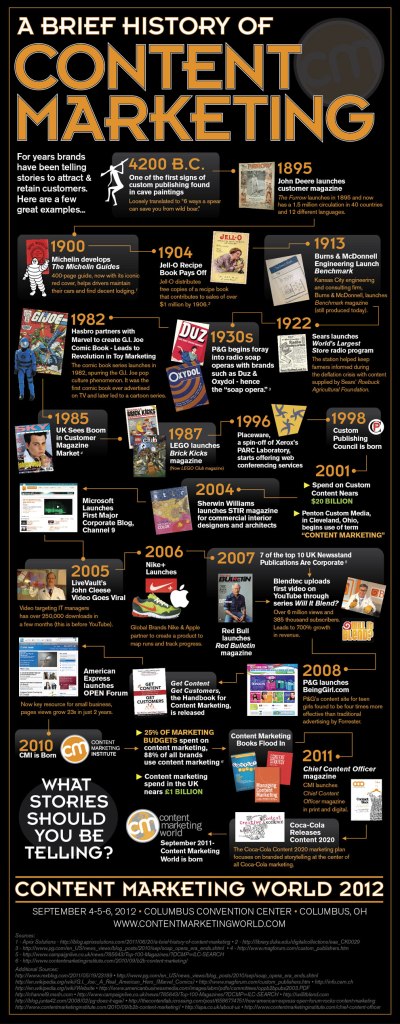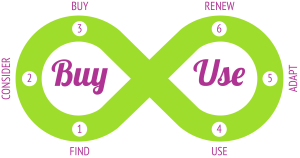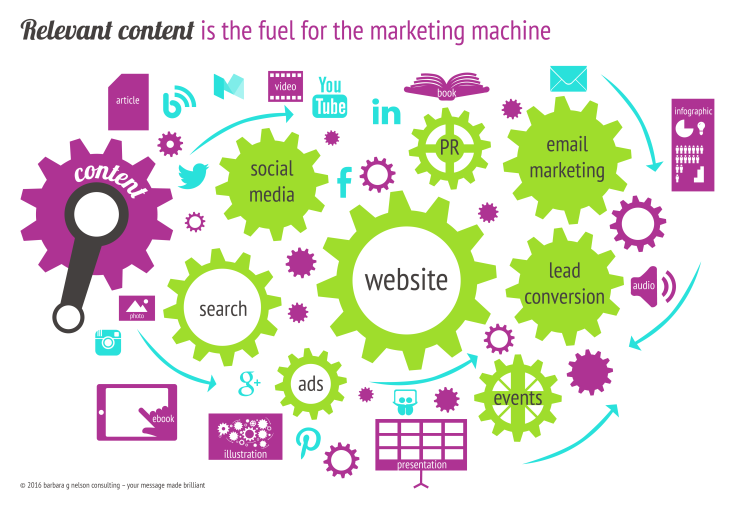I love great infographics, especially when they illustrate a topic I care about. Seeing complex ideas presented in an appetizing, easily consumed format is so satisfying.
Here’s one I found when I was reading through this year’s Content Marketing Awards.
I can see why The Customer Journey by IDG Enterprise was a finalist for Best Infographic. There is so much data here, but it is organized in a way that fulfills the subtitle “The Guide to Reaching IT Decision Makers Through Content Marketing.” If you sell to IT decision makers, you ought to click here to get a poster of this and really internalize everything it says. Even if this content isn’t relevant to you, it provides a teaching moment for creating infographics.
My criteria for great infographics:
Educational
This one is abundant with useful information and advice when selling to IT decision makers whether you engage IDG Enterprise or not.
Actionable
Although there is a massive amount of data on this infographic, the clear call to action of “5 Top Tactics – How to Engage ITDMs” engages the reader to take the next steps.
Credible
IDG Enterprise has a strong reputation. But the statistics from their 2014 IDG Enterprise Customer Engagement Survey bring market authority from the respondents, not just IDG Enterprise opinions. The way the statistics are woven into the overall story is masterful, beginning in the introduction and threaded through each of the 5 main points.
Organized
The flow of the infographic starts with the title “The Customer Journey.” Since I care a lot about the customer journey, this is what propelled me to look for this infographic when I saw the Best Infographic award.
The subtitle, “The Guide to Reaching IT Decision-Makers Through Content Marketing” further drew me in. Three things about the subtitle hooked me:
- Guide: This is intriguing because it infers educational and actionable.
- IT Decision-Makers: This is a persona I marketed to for years, across different industries. Although many things change depending on industry and type of problem you solve, there are a lot of similarities that cross industry and problem.
- Content Marketing: This has been a passion of mine for a long time, especially in the last few years.
The subtitle alone is a trifecta for me.
Then, the introduction starts with “The Challenge.” LOVE it! “What problem are you trying to solve?” is one of my all time favorite questions. When you state the challenge, you draw in those who know they have the problem, and can intrigue those whose problem is latent.
Down to the body, the reader is walked through the 5 groups of information, finishing up with the clear call to action. Without a strong organization, your eyeballs would have been spinning on the top third of the infographic. As it is, there is a lot to digest in one sitting, but you can easily come back to where you left off to absorb more after you’ve taken a breather.
The information is scannable (where I can hone in on interesting “chunks”) with multiple points of entry. I can move from left to right consuming each morsel step by step, or I can scan down the first column for the highlights of the 5 groups, and go back up again through the details.
Creative
Although extremely busy, the use of color, typography, icons, and the hand drawn touches all work well to take the reader on a journey through the information. The first 5 steps are colored blue (this is the main body of information) and the conclusion is orange which leads your eyes to the call to action.
A bonus for creative would be creating a chart or graph where the shape reflects the context of the statistic. The Customer Journey infographic doesn’t have any, but here is an example:
Do you have any great infographic examples? Post them in the comments along with why they are great.








